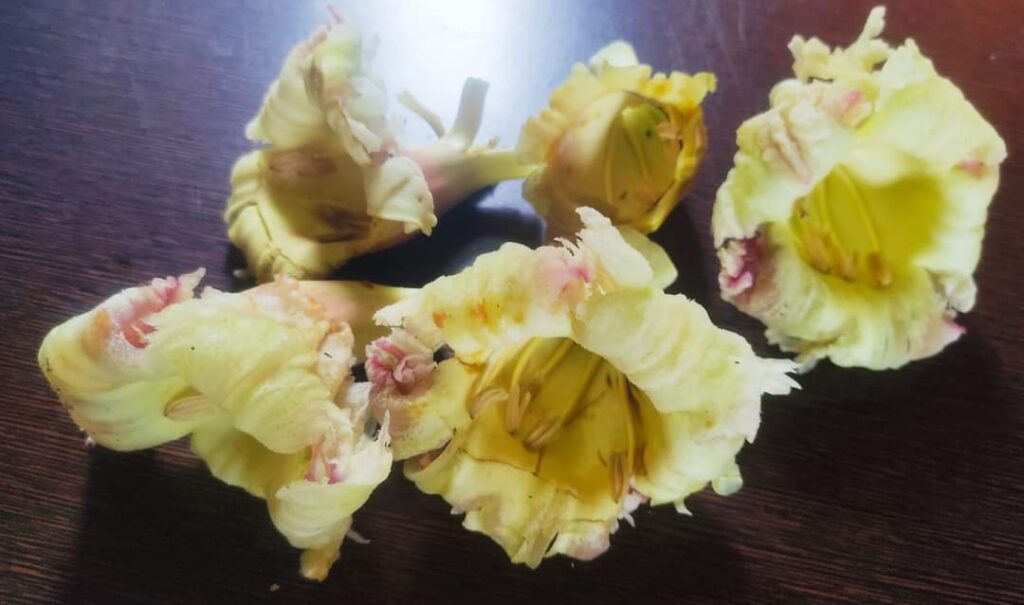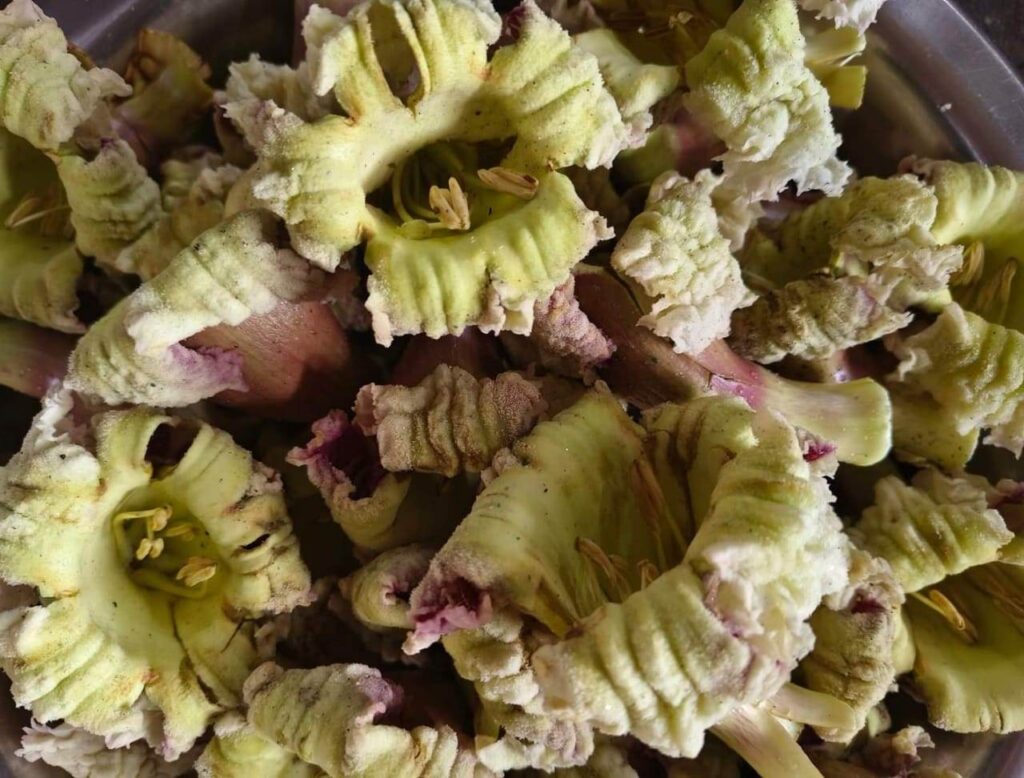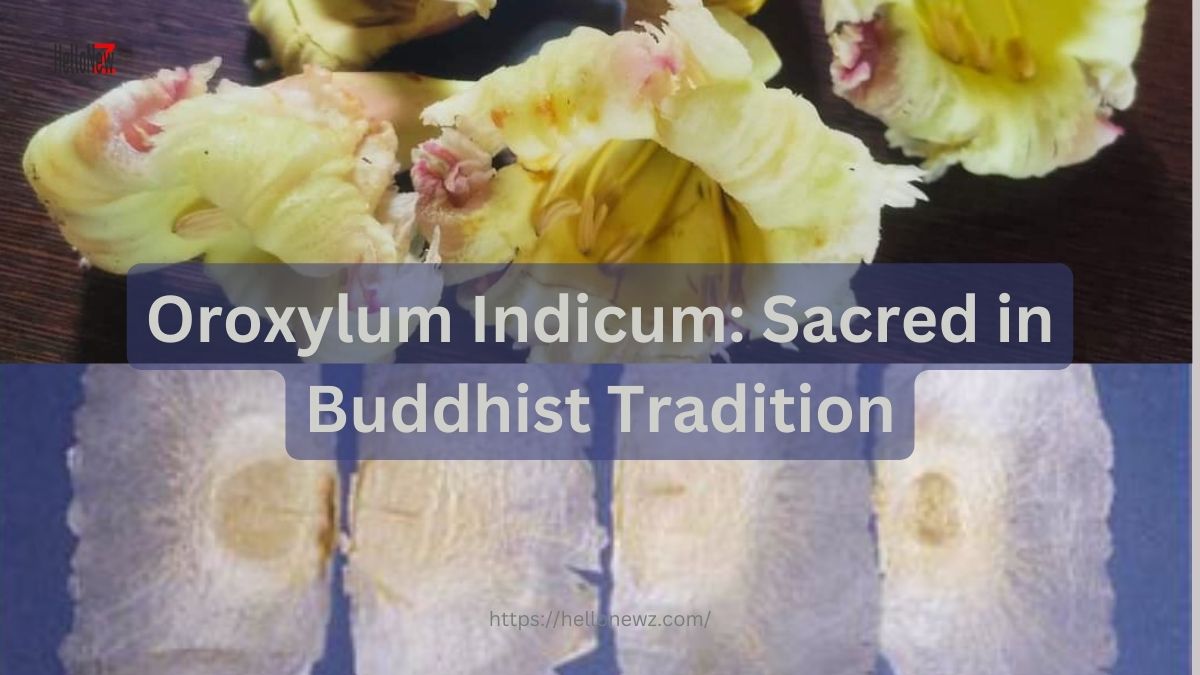The Oroxylum indicum, commonly known as ‘Totala’ in Nepali and also known as the Indian trumpet flower or midnight horror, holds a revered place in the Buddhist tradition. This plant, now considered endangered, is often seen as a substitute for the Kalpavriksha, a wish-fulfilling divine tree mentioned in Hinduism, Jainism, and Buddhism. Oroxylum indicum’s seeds and parts are extensively used in religious activities and cultural practices. This plant’s significance spans from pujas and special occasions to marriage ceremonies and even Buddhist flags. Additionally, in tantric rituals, its seeds are used in making torma (sculptures made mostly of flour and butter) as a pure and sacred offering, especially by those who cannot afford butter.
Oroxylum Indicum: Traditional and Ancient Beliefs
Historically, the Oroxylum indicum tree was venerated and often planted near temples and sacred groves. It was believed to ward off evil spirits and bring health and prosperity to the community. In Buddhist tradition, this plant is treated as one of the purest, with its seeds considered a potent substitute for the divine Kalpavriksha, believed to be available only in heaven. The use of Oroxylum indicum in various rituals and ceremonies underscores its deep-rooted significance in cultural and spiritual practices.
In the regions of Sikkim and Darjeeling, Oroxylum indicum holds a special place in local traditions. The seeds of the plant are often used in cultural practices, particularly during significant events and ceremonies. Placing the seeds on the head of a person is believed to bring good fortune and protection. During pujas, special occasions, and marriage ceremonies, the seeds are used to signify purity and auspiciousness. Even in Buddhist flags, the presence of Oroxylum indicum seeds symbolizes divine blessings. The practice of using these seeds in torma, especially when butter is not available, highlights the plant’s versatility and sacred status.

Oroxylum Indicum: Medicinal Properties
Oroxylum indicum has been used in traditional medicine for centuries. Its various parts—bark, leaves, flowers, and seeds—are known for their therapeutic benefits:
- Anti-inflammatory and Antioxidant: The plant contains flavonoids and other compounds that help reduce inflammation and combat oxidative stress.
- Digestive Aid: Decoctions made from the bark and seeds are used to treat digestive disorders, including diarrhea and dysentery.
- Respiratory Health: The plant is used to alleviate symptoms of asthma and bronchitis.
- Anti-cancer: Some studies suggest that extracts from the plant may have anti-cancer properties.

How to Use Oroxylum Indicum
The traditional methods of using Oroxylum indicum vary depending on the ailment:
- Bark Decoction: The bark is boiled in water to create a decoction that can be consumed to treat digestive issues.
- Seed Powder: Seeds are dried and ground into a powder, which can be taken with water or honey for respiratory problems.
- Flower Extract: The flowers can be steeped in hot water to make a tea that helps reduce inflammation.
Geographical Distribution
Oroxylum indicum is found in tropical and subtropical regions of South and Southeast Asia, including India, Nepal, Bhutan, Sri Lanka, Thailand, and Indonesia. It thrives in well-drained soils and is commonly seen in forested areas and along riverbanks.
Also Read: Breaking : Sikkim’s Tigers Make Historic Cross-Border Journey to Bhutan
Oroxylum indicum, with its striking appearance and potent medicinal properties, continues to be a plant of great importance in both traditional medicine and cultural practices. Its enduring legacy in the regions of Sikkim and Darjeeling highlights its significance as a symbol of health, protection, and cultural heritage. Whether as a natural remedy or a cultural artifact, the Indian trumpet flower remains proof of the deep connection between nature and human society.

